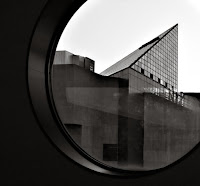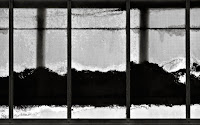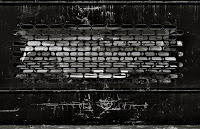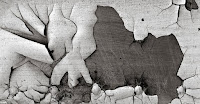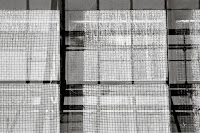 Physics is replete with "revolutions" in world-view that emerged after someone was brilliant enough - and brave enough - to question the foundations of "common wisdom." Witness Copernicus and his assertion that the Earth was not the center of the universe; Newton and his realization that the same force that binds us, as physical beings, to this planet is the same one that keeps the planets in their orbits; James Clerk Maxwell and his curiosity about the relationship between electricity and magnetism; Einstein and his stubbornly persistent analysis of the deep meaning of simultaneity; and Louis de'Broglie (along with a handful of others, including Einstein) puzzling over the difference between particles and waves. The list goes on and on, of course. In each case, a seemingly mundane - but sincere - questioning of an "obvious" fact (as Tommy Lee Jones says to the Will Smith character in the movie Men in Black, as he tries recruiting Smith's character to join MIB: "Everybody knew the Earth was flat...") led to a radical conceptual reordering of how we think of the universe, and our role in it.
Physics is replete with "revolutions" in world-view that emerged after someone was brilliant enough - and brave enough - to question the foundations of "common wisdom." Witness Copernicus and his assertion that the Earth was not the center of the universe; Newton and his realization that the same force that binds us, as physical beings, to this planet is the same one that keeps the planets in their orbits; James Clerk Maxwell and his curiosity about the relationship between electricity and magnetism; Einstein and his stubbornly persistent analysis of the deep meaning of simultaneity; and Louis de'Broglie (along with a handful of others, including Einstein) puzzling over the difference between particles and waves. The list goes on and on, of course. In each case, a seemingly mundane - but sincere - questioning of an "obvious" fact (as Tommy Lee Jones says to the Will Smith character in the movie Men in Black, as he tries recruiting Smith's character to join MIB: "Everybody knew the Earth was flat...") led to a radical conceptual reordering of how we think of the universe, and our role in it.While I do not propose any such radical reconceptions of our world in this humble little blog entry, I am going to suggest that the "creative act of photography" affords us an opportunity to ask a disarmingly trivial question (that may indeed alter how we perceive and interact with our environment, and ourselves). I will preface the question by first positing that one of the deepest mysteries confronting science today (apart from questions pertaining to the standard model of physics, string theories, or loop quantum gravity) is the nature and origin of consciousness. Consciousness is something we all, presumably, possess; yet is something about which - apart from knowing we possess it, and guessing that our experience of it is "pretty much the same" as that of any other humanly conscious creature - we have little or no real understanding.
 Three of the more cogent (and often widely disagreeing) discussions of consciousness are (1) Consciousness Explained (by Daniel Dennet), (2) The Conscious Mind (by David Chalmers), and (3) I am a Strange Loop (by Douglas Hofstadter). None of these, of course, "explains" consciousness; but all are great at stimulating further discussion.
Three of the more cogent (and often widely disagreeing) discussions of consciousness are (1) Consciousness Explained (by Daniel Dennet), (2) The Conscious Mind (by David Chalmers), and (3) I am a Strange Loop (by Douglas Hofstadter). None of these, of course, "explains" consciousness; but all are great at stimulating further discussion.My particular interest, at least for purposes of this blog entry, is that aspect of consciousness that has to do with intentionality; i.e., the (apparently) willful decision to "act" (such as when we decide to "press the shutter" of a camera). Before I ask that question, however, consider this "simple" experience: I am holding a ball in my hand, which, at some point in time, for whatever reason, I decide to throw up in the air a few inches, and catch again. A trivial everyday act. Yet an utter mystery, as far as both fundamental physics and our understanding of consciousness is concerned. Just as there is no "physics" (of which I am aware), no equations or simulations, that accounts for why a small sphere located at some space-time position (x,y,z,t) suddenly "decides" to move against the gravitational field; there is no theory of consciousness that "explains" why I chose to throw up a ball. Oh, I certainly register the fact that the ball has been thrown - i.e., I am "conscious" of having done so after I've done it - but I have utterly no idea why I chose to throw it at the time I threw it. Bejamin Libet has studied this fascinating phenomenon in the laboratory (see Mind Time), and has found that consciousness is actually far from a vehicle of willful intentionality; indeed, its real purpose may be to negate possible actions, not - as we have been taught by convention - to create them.
Why am I choosing the words I'm typing now, and not others? How are they forming in my mind (and, while we are on the subject, what is mind?) I am aware of having "written", but I am at a complete loss as to explaining why I chose the words I did; nor am I able to "explain" why they emerged when they did. They "come out of me," as if by magic; and I have little, or no, "control" over what they are or when they will form. My conscious self reflects back on their existence, but appears blissfully unaware of the process by which they were created.
 So what does all of this have to do with photography? Everything, really; the creative act of photography is a microcosm of our general state of conscious experience. In my previous blog entry ("Experiential Flow in Photography"), I wrote of how the best photography is usually done when the photographer is in a state of flow; in which many of the attributes of "self awareness" - or consciousness itself - vanish. In truth, though, every single photograph is a result of (at least an instant's worth) of a "lack of consciousness." When I press the shutter, at that instant, I am completely unaware of why I have done so. It is important to understand exactly what I mean by this. I do not mean that I have idea of what I am doing. Clearly, I am out taking photographs, and I am fully aware of this, even as I press the shutter. But when my finger physically moves down on the shutter button to initiate capture, I have absolutely no idea why that act did not occur a microsecond before or a microsecond after. Indeed, if Libet's research is to be believed, the best I can say is that I become aware of having pressed the shutter button only after I have done so, but in no other way has my consciousness been an active participant in the process that led up to pressing the button.
So what does all of this have to do with photography? Everything, really; the creative act of photography is a microcosm of our general state of conscious experience. In my previous blog entry ("Experiential Flow in Photography"), I wrote of how the best photography is usually done when the photographer is in a state of flow; in which many of the attributes of "self awareness" - or consciousness itself - vanish. In truth, though, every single photograph is a result of (at least an instant's worth) of a "lack of consciousness." When I press the shutter, at that instant, I am completely unaware of why I have done so. It is important to understand exactly what I mean by this. I do not mean that I have idea of what I am doing. Clearly, I am out taking photographs, and I am fully aware of this, even as I press the shutter. But when my finger physically moves down on the shutter button to initiate capture, I have absolutely no idea why that act did not occur a microsecond before or a microsecond after. Indeed, if Libet's research is to be believed, the best I can say is that I become aware of having pressed the shutter button only after I have done so, but in no other way has my consciousness been an active participant in the process that led up to pressing the button.The act of taking a picture thus presents the photographer with both a puzzle (about who we really are, apart from the role we play in helping the universe take a picture of itself) and an opportunity to learn something about the universal core of the creative process and consciousness itself.
 What I sometimes do (when I can retain enough of my self-awareness to remember to do this;-) is to try to minimize the time between which I have pressed the shutter and at which I become conscious of having pressed the shutter. This is not at all as "easy" at it may sound. It requires a razor-sharp Zen-like focus on the process and the moment; and is, at heart, obviously antithetical to the "photographic flow" process, as described in my earlier blog entry. It harbors a bit of a paradox: the deeper one is immersed in the "flow," the less able one is to "reflect" on the process and "understand" the unconscious instant of capture; on the other hand, the "easier" it is to reflect on the process, the less likely it is that the process being reflected upon is the one of deepest interest (i.e., "flow"). Paradox - unavoidably it seems - always lurks around questions about consciousness; and just as mysteriously, it lies at the very heart of the creative process.
What I sometimes do (when I can retain enough of my self-awareness to remember to do this;-) is to try to minimize the time between which I have pressed the shutter and at which I become conscious of having pressed the shutter. This is not at all as "easy" at it may sound. It requires a razor-sharp Zen-like focus on the process and the moment; and is, at heart, obviously antithetical to the "photographic flow" process, as described in my earlier blog entry. It harbors a bit of a paradox: the deeper one is immersed in the "flow," the less able one is to "reflect" on the process and "understand" the unconscious instant of capture; on the other hand, the "easier" it is to reflect on the process, the less likely it is that the process being reflected upon is the one of deepest interest (i.e., "flow"). Paradox - unavoidably it seems - always lurks around questions about consciousness; and just as mysteriously, it lies at the very heart of the creative process.


